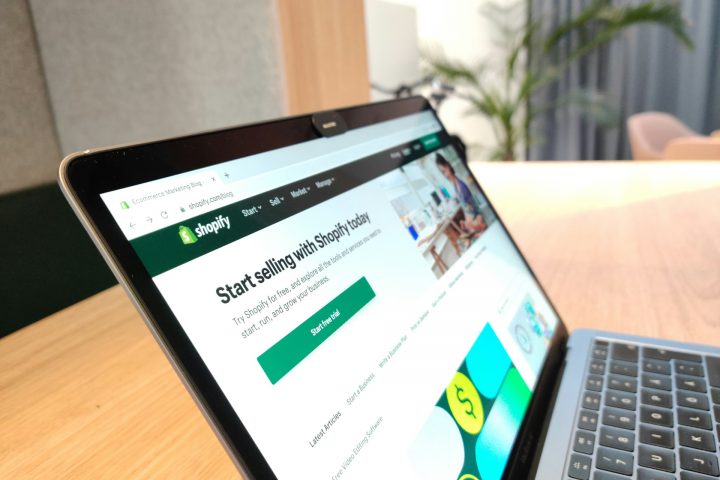Like many growing businesses, training companies will often encounter the ultimate scaling challenge: more clients means more admin work, more support, and more strain on internal teams. But it doesn’t have to.
According to Harvard Business Review, the overlooked key to a successful scale-up is a business development stage called extrapolation, “in which a company explores profitable growth options while exploiting economies of scale and scope.” In other words, scaling isn’t just about growing bigger, it’s about growing smarter.
So what does this mean for training companies that sell eLearning courses?
It means investing in systems that are built to grow with you, like an LMS that automates repetitive admin tasks, streamlines how content is delivered and updated, and gives clients more autonomy without adding to your team’s workload. With the right technology in place, you can serve more clients, generate more revenue, and reduce the operational overhead that usually comes with expansion.
Automate Client Management with Multi-Tenant LMS Sites
A mult-tenant LMS lets you create separate, branded LMS sites for each customer or partner. You can provide custom course access, unique business rules, streamlined reporting and various admin privileges. A multi-tenant LMS can help you scale your training business by making it easy to deploy training to organizations and large groups of end users. Here’s how:
Rapid Deployment
It should be quick and easy to create sites and onboard new clients. Considerations include branding (logos, colours, domain), course delivery strategies, and creating user accounts. Defencify Training, for example, deploys a dedicate training site in just 20 minutes. This allows their customers to get up and running with their own branded training platform almost immediately, giving Defencify a competitive advantage over training providers that require weeks or months for setup.
Centralized Control
Use a centralized master site to oversee all clients while allowing autonomy. Part of this strategy includes creating a course library in a master LMS site and distributing training to specific clients as needed. We’ll cover this in depth in the section below on streamlining content.
This also allows you to decentralize administration by providing different levels of admin access to your clients, enabling them to handle day-to-day tasks. You still have ultimate control over content access and reporting, but delegating certain LMS tasks will save you time in the long run.
You can also reduce manual onboarding by applying predefined business rules for each client. All you have to do is the initial setup, and maybe one or two onboarding sessions, and your client will be off to the races. This could include creating auto-assignments and user self-registration before giving LMS access to your client.
B2C to B2B Transition
Training providers often start small, selling courses to individuals or teams and eventually scale up to deliver courses to an entire organization. This often involves selling courses through your website using e-commerce LMS integration. But by tracking bulk purchases and reaching out to businesses, you can offer a more robust solution by transitioning eCommerce clients to dedicated training sites. This will result in long-term subscriptions and stronger client relationships.
Streamline Content Management Across Clients
Creating and delivering eLearning is usually not a one-and-done process, especially when you work with multiple audiences. You might need to create custom courses for each client and then keep those courses updated every year to account for new learning standards or industry changes. But this can be time-consuming and tedious for growing training providers. Here are a few ways to scale content management efficiently:
The Master Site Approach
As mentioned above, a multi-tenant LMS lets you load all your course content into a centralized repository, or master site. Content can be stand-alone files like SCORM or MP4s, or you can build individual items into larger, standardized courses. This strategy saves you time as it means you only have to load all of your content once and grant access to standardized courses across multiple client sites with just a few clicks. When you onboard new clients, you simply grant them access to courses from your master site, without having to duplicate effort across clients.
For larger clients with specific needs, you can update or add unique modules directly into their individual site, without affecting the master version. For example, you can tailor courses with client-specific logos, policies, or messaging inside their site only, keeping your core content clean and consistent. And to make things even easier, LMS admins can make a single update in the master site, which pushes changes out globally while still preserving customized versions for clients that need them.
Consider a training company that delivers a standardized set of health & safety courses like Workplace Hazard Identification and First Aid. Let’s say a large manufacturing client wants the base training but requires a custom module for company-specific incident reporting protocols. Here’s how a single admin can handle this in a multi-tenant LMS:
1. Grant access to the standardized course in the client’s site (from the master site)
2. Replace the standard incident reporting module with a customized one reflecting the client’s process
The result is there is no need to rebuild the entire course. You can leverage the master content while seamlessly layering in client-specific materials. This gives you flexibility to meet the custom course demands of large organizations, without incurring much additional cost.
SCORM Compliance and Updating Content
SCORM, which stands for Sharable Content Object Reference Model, is a set of technical standards for eLearning software products. Specifically, SCORM governs how online learning content and LMSs communicate with each other. It enables content to be reused, updated, tracked, and reported on consistently, all key factors for any training business looking to scale without adding operational complexity.
Where this is truly beneficial in a multi-tenant LMS is when you need to update content to reflect new standards or procedures in a course. In a multi-tenant LMS, a single update at the master site level cascades down immediately to all client sites that share the same course resource. So instead of having to perform updates for each client, you only need to do it once, saving immeasurable time.
Corridor Interactive, a Calgary-based workplace training provider, delivers custom training to organizations across North America. Without the ability to efficiently update content, they would face a significant challenge in meeting the demands of their clients. Corridor’s Director of Content & Learning Experience, Jennifer Stack notes that “from a content development point of view, this an incredible win because it has personally saved me a lot of time and it’s just made my life so much easier.”
Low Effort, High Value: Deliver to Any LMS
One challenge that growing training providers face is selling courses to large organizations that already have their own LMS. These organizations may be interested in your training, but don’t want to invest in a new LMS or change their current practices. One way to reach these clients without investing significantly more resources is through external LMS integration.
This integration lets you host and control content on your own LMS, while letting your clients launch it from theirs. Here’s how it works in a multi-tenant LMS:
- Create a new site/portal for your client
- Grant access to your courses to the new site
- Download a SCORM “pointer package” for each course and give it to your client for them to load into their LMS
- Set how long your client gets access to the courses for and how many new participants they can add
The result is you can scale to enterprise clients using the same LMS framework already in place (client sites, master content, etc), adding a new revenue stream without expanding support staff or duplicating systems. You also maintain full control of your course content, updates, and data.
Optimize Reporting and Client-Specific Insights
Track What Matters
To properly scale your training business, you need to prove the effectiveness of your courses, both to retain new clients and win new ones. Remember, clients are more likely to stay when they can clearly and easily see results. This is why getting LMS reporting right is so important. According to Articulate, key metrics like completion rates, assessment scores, and ROI help demonstrate impact. LMS reporting should scale with you by making it easy to track multiple users and clients without adding to your workload.
Here’s how to make it work: With client-specific reporting, each organization only sees their own data, reducing confusion and risk of mix-up. You can also decentralize reporting access to your clients by assigning different levels of administrative privileges. For example, location-based admins only see data relevant to their location. Or some admins can be restricted to reporting access only, reducing the chance of accidental changes to content or user settings.
Additionally, segmented reports by location, department, or job title make performance easier to visualize, helping both you and your clients pinpoint what’s working. When clients can pull the insights they need without coming to you for support, you save time while delivering more value. This creates a system that supports retention, reduces admin strain, and positions your business for sustainable growth.
Automated Insight Delivery
You can improve the scalability of your reporting processes by automating reports and reminders. One way to manage this is by configuring reports to send at specific intervals to specific people. For example, you could schedule monthly progress reports to HR Managers in different locations. You can also set automated reminder emails to admins, such as a list of users who are overdue on a course.
Automating scheduled reports and reminders means you’re not manually pulling data or fielding recurring requests from clients, saving hours of admin time every month. Delivering insights directly to the right stakeholders (like monthly course completions to HR managers) reinforces the value of your training while lowering the cost of client engagement and support
Scale Without the Strain: Key Takeaways
Scaling a training business effectively depends on maximizing your current resources, particularly your LMS. A multi-tenant LMS allows for rapid deployment of training programs to new clients, centralized content management and the ability to easily transition small customers into dependable, long-term relationships. The right processes allow you to scale efficiently, deliver greater value, and reduce the strain on your internal team. With automation and smart content management in place, growth becomes both sustainable and profitable.




